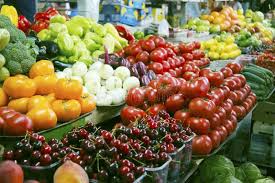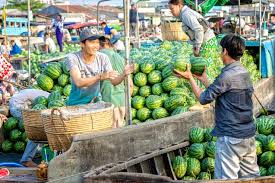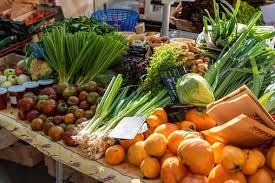The concept of market structure is used to study the number, size distribution, and power of market participants. This concept, initially popularized by industrial organization economists, is rapidly gaining traction in the study of agricultural marketing. The application of the market structure model has been predominant in developed countries; however, its importance is being recognized in less developed countries as well.
Market Structure Defined in Agriculture
Market structure can be defined as the characteristics of the organization of a market that strategically influence the nature of competition and pricing within the market. Factors that are significant in determining market structure include:
1. Number and size of buyers and sellers: The size and number of participants in the market.
2. Degree of product differentiation: The uniqueness of the products being offered.
3. Ease of entry and exit: How easily participants can enter or leave the market.
4. Status of market knowledge: The extent of information available about costs, prices, and market conditions among participants.
Market structure essentially relates to the level of competition in a market. It considers whether the number of firms producing a product is large or small, and whether firms are of equal sizes or dominated by a few.
It also focuses on whether entry for new firms is easy or difficult, and whether the product is sold in a competitive environment. Additionally, it examines the level of market knowledge available to these firms. These factors will be discussed in detail in the following sections.
Read Also: Pig Breeds: Origin, Indigenous and Exotic Breeds of Pigs
Number and Size of Firms in Agricultural Markets

The concept of market structure is essential in explaining the limits on the freedom of action, and hence the managerial options, of any buyer or seller. Generally, the effect of the relative size of buyers and sellers is evident.
A single large seller, without any close competitor, offering a highly desired product to many small competing buyers, has the power to set a very high price. The opposite occurs in the case of a single large buyer (monopsonist) who purchases from many small competing sellers. This buyer is likely to set a lower buying price than if several other buyers were competing with them.
Nature of Agricultural Products
Some products are standardized (homogeneous); most consumers perceive the products of one seller to be virtually no different from those of other sellers. For instance, a farmer selling cassava or maize may find it challenging to convince buyers that their product is different.
On the other hand, products like livestock feed are differentiated by brands, such as Sambo Feeds, Pfizer Feeds, Sanders Feeds, Top Feeds, Vital Feeds, Animal Care Feeds, Rebson Feeds, and Noma Feeds. Each feed mill claims that their product is superior in quality to others. Livestock farmers also believe that the quality of the feeds differs, making the products distinct in the eyes of buyers.
Where product differentiation exists, firms selling differentiated products may behave like small monopolies. These firms do not need to fear that price undercutting will entirely erode their market share. Therefore, the nature of the product helps determine the types of behavior that can be expected under different market conditions.
Read Also: The Potentials and Constraints to Pig Production in Developing Countries
Entry and Exit Conditions in Agricultural Markets

Entry and exit conditions refer to the ability of a firm to enter or leave a market. Certain barriers might exist, such as patents that prevent other firms from producing and selling a patented product for a specific period. Aside from patents, other legal restrictions might prohibit firms from participating in the market.
For example, the government could establish monopsony firms like the defunct cotton boards. Other factors that may influence entry and exit include absolute cost advantages held by existing firms or prohibitively high entry costs. For instance, significant capital is required to enter the steel industry, the produce buying business, or the poultry business.
Market Knowledge in Agricultural Markets
Market knowledge refers to the information available to buyers and sellers that allows them to make decisions in the market environment.
It is assumed that buyers and sellers will make more rational decisions if they have sufficient information about prices in different markets and the quality of various products. Market knowledge extends beyond price information to include details about competitors’ actions and future market conditions.
Do you have any questions, suggestions, or contributions? If so, please feel free to use the comment box below to share your thoughts. We also encourage you to kindly share this information with others who might benefit from it. Since we can’t reach everyone at once, we truly appreciate your help in spreading the word. Thank you so much for your support and for sharing!
Read Also: The Impact of Business Waste Recycling Services on Our Environment

